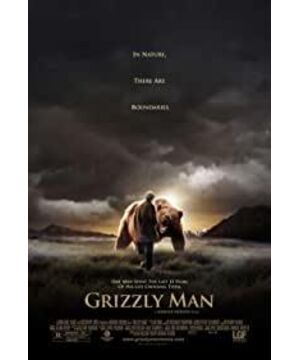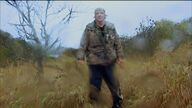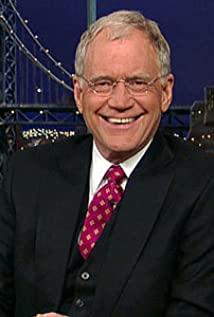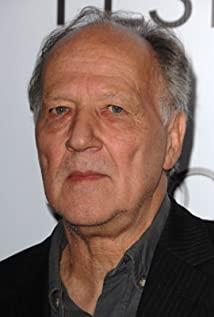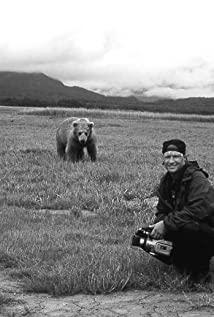As a documentary, "Grizzly Man" is extremely simple and unpretentious in form. The material of the whole movie is divided into two categories. One is the material clips that Tridwell filmed for himself in Alaska before his death. Interviews with staff related to his death. The film is edited back and forth between these two types of material, trying to reveal the one closest to the true face of Treadwell. There is no magnificent visual spectacle or sensational drama in this film. It seems to be just a fairly modest Discovery Channel documentary ("Grizzly Man" is indeed co-sponsored and broadcast by Discovery Channel). If you accidentally Seeing it on TV, you would never think that it was filmed by a legendary director who is revered as a master of film. But the formal tradition does not mean mediocrity in techniques and themes. As a well-tested documentary veteran, Herzog has a grasp of film skills. If Treadwell’s story itself is already exciting enough, then Herzog has even used a combination of interviews, data fragments and narrations to exile Treadwell and seek the horizontal time course of death, turning it into a cocoon in his heart. Longitudinal journey of excavation. At the same time, Herzog continues to discuss the theme he insisted on during his decades of film career through the analysis of Treadwell: the relationship between the marginalized people and civilization. Treadwell’s behavior with the grizzly bears and hype was misunderstood by the world, and he was also quite unfair about it. He tried to use his own images to change the world’s views and get himself recognized, but the result was not as good as it should be. willing. This marginal person, who was not accepted by civilization, also unwittingly joined Gaspar Hauser (the protagonist of [everyone for oneself, God against everyone]) and Shi Chuxi (the protagonist of [Shi Chuxi's wanderings]), and became The research object under the lens of Herzog. From this perspective, even as a documentary, "Grizzly Man" is still an out-and-out Herzog movie.
However, if only the proficiency of skills and the recurrence of the theme are not enough to make "Grizzly Man" an outstanding documentary. Only the conscious and dialectical discussion of this aspect of filmmaking in this film makes it not only surpass the stereotypes of ordinary documentaries, and become a documentary with self-reflection and deconstruction, but also allows the film’s portrayal of Treadwell Instead of going to clichés and extremes, Herzog's wisdom and profoundness as a bystander are revealed.
As we all know, the purpose of documentaries is to present real information about the world. However, how should truth be defined? In documentaries, truth must be expressed through people after all, but the different perspectives and viewpoints between people make the truth in the eyes of different people different. What's more, in addition to being restricted by the author's point of view, a documentary also has to be filtered by a camera lens, which is not an objective machine. In the post-editing process, the difference between the shots of a few frames can sometimes completely change the meaning of an image. After the above-mentioned layers of filtering, how can the film objectively reflect the "real information of the world"? Bazin once said that "film is the asymptote of reality." In fact, this can also be understood as reality is always the unattainable goal of film. The more documentaries want to get closer to objectivity and reality, the more they reflect the film as a medium. The pretentiousness and paleness. These congenital shortcomings of documentary films will naturally become drawbacks in character creation. The great flexibility in camera position and material selection unintentionally endows the creator and the documentary protagonist (in the original material of "Grizzly Man", then It is Treadwell who plays both of these two roles.) The convenience of controlling the character's image through film techniques. Since even Hitler can be portrayed as a wise and powerful leader by Levenstahl's lens, it is naturally an irresistible temptation to beautify our own image through images for those of us who cannot surpass vanity.
There is no doubt that Treadwell is also a self-portrait who pays great attention to self-modification. Through the interview with Herzog, we know that the public image that Treadwell uses to face the camera is quite different from its real behavior. For example, he claims to be a British orphan who grew up in Australia, but in fact he was born in a middle-class family on Long Island, New York; he has always portrayed himself as a lonely guardian of wild animals when facing the camera, but behind the camera, He is often accompanied by female companions, who have always been the object of his camera rebuff. In addition, the technique he used in taking selfies is also hard to be called objective. Although everyone uses self-modification to gain the favor of the viewer when facing the camera, Triidwell not only modifies himself with a self-modified image, but also uses the method of stopping and shooting for himself in front of the camera. The choice of performance is different. In each shot, the lines he speaks and the way he expresses his actions are different, which undoubtedly makes it more difficult for the audience to grasp his true face.
Perhaps we can attribute Treadwell's strong desire for performance to the experience he once rubbed shoulders with the acting career. According to Herzog’s interview with his parents, Treadwell had participated in the audition for the sitcom "Happy Hotel", and was second only to Woody Harrison ("Born Murderer" and "Sex Book Tycoon"). The lead actor) was knocked out of the game, and it was this failure that left him devastated. His practice of changing a performance style for each shot in his own material is somewhat similar to the methodological performance methods commonly used in feature films. From the point of view of shooting documentaries, Tridwell’s When filming his experience with the grizzly bear, he did not settle for the identity of an uninvolved recorder. Instead, he often used his strong self-expression to control the material and mystify or even mythify himself.
When facing the self-photographed material of Treadwell in "Grizzly Man", I often get confused about Treadwell's self-contradiction in setting up his own image. He has always wanted to portray himself as a rebel who despises human civilization, but his strong desire to express is always calling the attention of civilization; he seems to be grateful when facing grizzly bears, but he respects himself As the leader of the bears, his intimacy towards grizzly bears is more like love and affection for teddy bears, rather than sincere enthusiasm for them after accepting and understanding their wild nature; he firmly believes that the laws of nature are harmony and balance, and even do not hesitate to do so. This intervention in nature (changing the river course, asking the gods for rain), but it was the harsh nature of nature that struck him hard. Perhaps, his misunderstanding of the laws of nature and his rather biased attitude when shooting images about himself are two sides of the same thing. After all, people should conform to nature rather than interfere with nature, just as documentary creators should be content to record facts instead of deliberately manipulating images and reality.
Treadwell's tragedy was probably a punishment for his arrogance by the laws of nature, but he seemed to have expected it a long time ago. In the video clips he shot for himself, "death" is one of the most frequently occurring words, and his girlfriend Amy, who died with him, once said that he was "seeking death with all his heart". Perhaps for him, instead of dying in society, it is better to pass death in the wilderness and become immortal. Although the director Herzog did not agree with Treadwell’s concept of nature, he respected his courage in the face of nature. Herzog’s selection of the ending shots for Treadwell was also in "Grizzly Man". The most moving picture. In the picture, Treadwell walked to the depths of the river, behind him are two grizzly bears closely following him, like his boy soldiers. And Tridwell, the man described by Herzog as "walking into the confession room when facing the camera", finally found the salvation he had never obtained in nature in this final image.
(Originally published in "Midnight Field")
View more about Grizzly Man reviews


